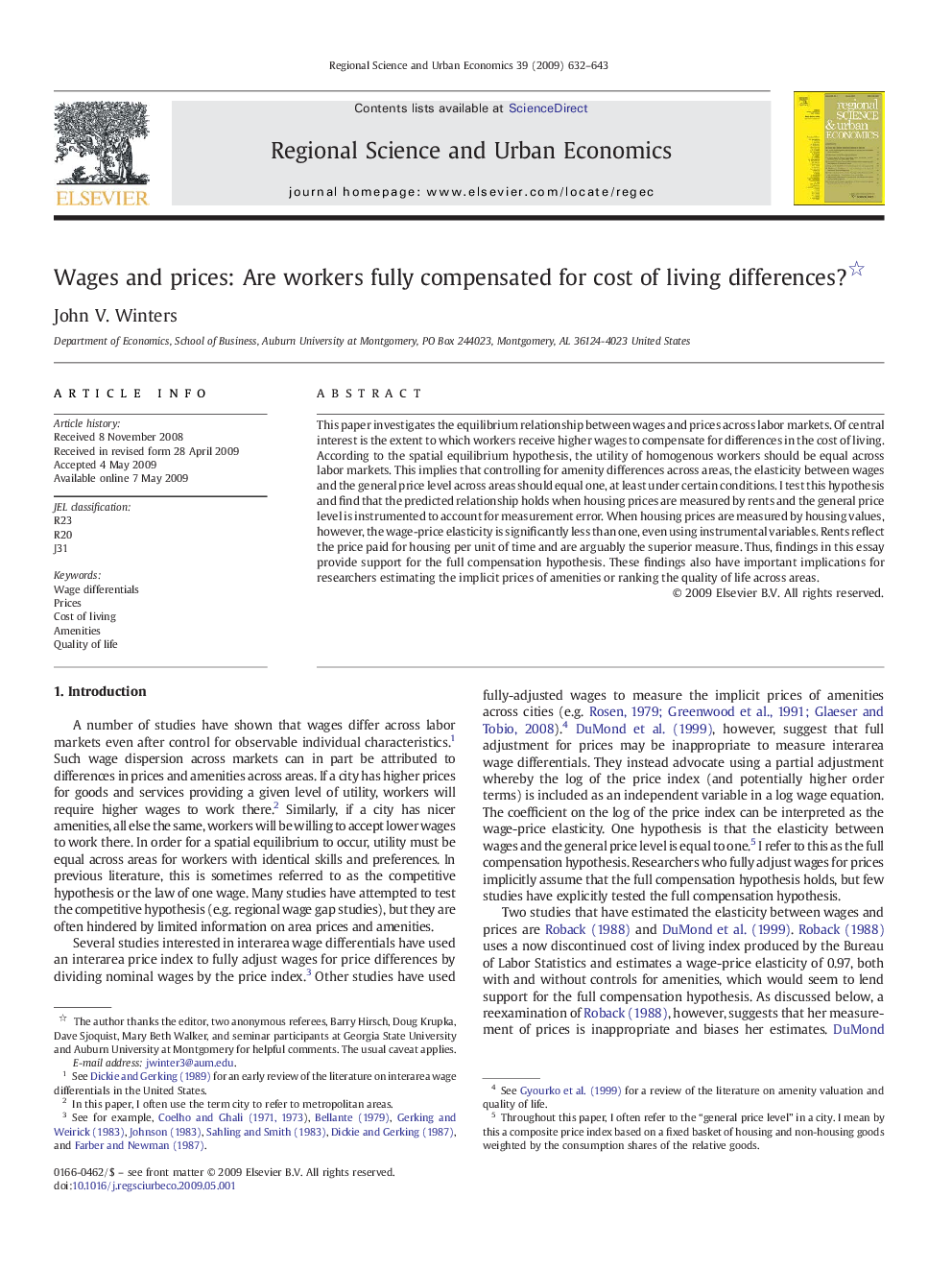| Article ID | Journal | Published Year | Pages | File Type |
|---|---|---|---|---|
| 983511 | Regional Science and Urban Economics | 2009 | 12 Pages |
This paper investigates the equilibrium relationship between wages and prices across labor markets. Of central interest is the extent to which workers receive higher wages to compensate for differences in the cost of living. According to the spatial equilibrium hypothesis, the utility of homogenous workers should be equal across labor markets. This implies that controlling for amenity differences across areas, the elasticity between wages and the general price level across areas should equal one, at least under certain conditions. I test this hypothesis and find that the predicted relationship holds when housing prices are measured by rents and the general price level is instrumented to account for measurement error. When housing prices are measured by housing values, however, the wage-price elasticity is significantly less than one, even using instrumental variables. Rents reflect the price paid for housing per unit of time and are arguably the superior measure. Thus, findings in this essay provide support for the full compensation hypothesis. These findings also have important implications for researchers estimating the implicit prices of amenities or ranking the quality of life across areas.
